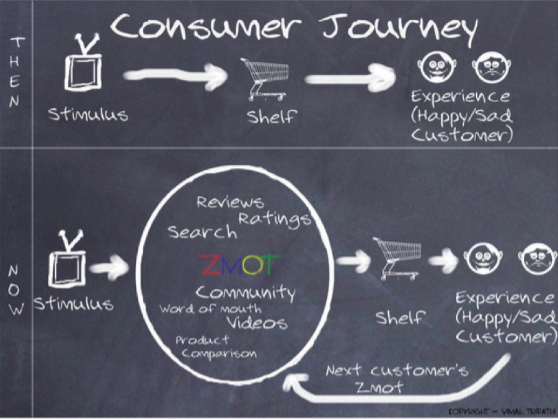New rules of engagement: how modern branding is much like Tinder
Share
Promoting a brand and engaging with consumers online in 2016 is, for Karl Moe, similar to having an account on Tinder.
 It is such a great time to be alive, and I’m so grateful for it. I look around everyday in pure amazement of how modern day brands are behaving online and offline.
It is such a great time to be alive, and I’m so grateful for it. I look around everyday in pure amazement of how modern day brands are behaving online and offline.
I remember the days in 1994, when I’d cooked and eaten my dinner, while waiting for my modem to connect to the internet; just to log on to a text based chat software called mIRC.
It was how people connected online and online dating was conceived. Things were so basic back then, making apps like Tinder seem like a miracle.
Marketers and branding agencies had it easy back then I think. We didn’t really worry too much about online brand reviews, tweets, or Facebook likes. We launched advertising campaigns, sales took place, or not, and that was it. It was a heyday.
Just like online dating, branding trends have been undergoing a shift over the past few years. It’s starting to really accelerate toward a more personal, connective state, effectively rendering the above branding or marketing model obsolete and irrelevant.
Attention spans are getting shorter. Things have been reduced down to swiping left or right to match with someone, and it’s a trend that applies to brands as well. Fighting for attention is becoming a quest for the Holy Grail.
We, agency folk and marketers, used to approach branding with a colour scheme choice, using the right font, imagery and ensuring an exclusion zone around the logo is maintained.
New rules of engagement have emerged. The old branding trends lived in a return on investment (ROI) universe. Which by modern day realities, is limited and doesn’t give business owners and their marketing teams the bigger picture.
As Andy Frawley argues, a better measuring model is required. He likes to call it the ‘return on experience’ or the ROE2 model. He goes on to explain that the ROI model was prevalent before the plethora of digital channels we have today.
These channels represent a massive world of touchpoints and experiences for both potential and current customers. In the modern dating world, people connect now by swiping right or left, or based on proximity. New experiences and channels are born everyday for both daters and brands. It’s a fight for survival.
Whether it’s a business owner or a marketer, they both want a more holistic measure of consumers’ total brand experience and their level of engagement. We live in an era of quality lifestyles, in constant pursuit of happiness. We buy and consume products or brands mainly because they make us feel good. They allow us to enjoy a better quality of life; they provoke certain emotions within us.
These emotions are triggered normally by the experiences we have with a certain brand. But what does this mean for marketers or business owners?
This means that marketers will need to measure human emotions to ensure a positive return on experience. However, It’s more difficult to quantify the human emotion created by brands than simpler metrics like number of share or page views, but it isn’t impossible.
A dilemma right? Not really.
I am often asked by clients about the best possible means to measure human emotions. ‘Someone should invent a breathalyser to measure that’ I say. Jokes aside, and from my experience, I often refer to and explain the ‘Emotional Value Metrics’ model. This model utilises three indirect proxy metrics. My clients’ use them to discover how their customers are identifying with their brands.
The three key metrics are: interaction, engagement and participation. They are small tests that marketers can readily use. These tests will help identify which of your branding trends and efforts are positively perceived by your customer base and why.
Marketers will be able to dig a bit deeper. They will understand which messaging resonates best with a certain customer segment in the real world.
Let’s examine these three metrics more closely to see how Tinder and modern branding are similar.
Interaction
A new mental model of marketing has been steadily gaining ground recently. Marketers started measuring how customers interfaced with their brand messaging at a diverse range of touchpoints.
This is basically when someone opens your email, views a web page, downloads an eBook, you get the idea. These mini actions are what we call Interactions. Measuring them is simple. Has a customer watched a video? Liked your Facebook page? Liked a tweet?
Marketers should think of this as the non-exclusive start of a relationship between the brand and customers. This is like when you swipe right on Tinder and match with someone, it doesn’t mean you’re meeting the parents next week.
On Tinder, daters out there use some of their best pictures to lure in a great match. The guys at Google like to call this the ZMOT, or the ‘Zero Moment of Truth’. It’s about online first impressions. As the following illustration explains, marketers should make sure that they’re winning their brand’s ZMOT and first point of interaction.
The second row in the graph shows a critical closed loop feedback. Where the customer experience with the brand, which we need to measure, will determine the next customer’s ZMOT. Marketers need to get both of them right. Thus they really need to start measuring the emotional value their brands enjoy at the experience end of things.
Unfortunately this is where many companies make mistakes. They gain a 100K Facebook or IG followers. Then stop! I get it, it’s a big numbers game and it feels good.
But just like on Tinder, marketers shouldn’t start planning a wedding when they first match with someone. The hard work is just about to start. You now need to come up with a kickass opening line to stand out and keep your match interested.
Don’t mistake interaction for the depth that emotional-value can and should attain.
Engagement
I will continue to use the same Tinder analogy because it fits the purpose of this article to a great extent. Let’s say you’ve swiped right and matched with someone. You came up with a kick-ass opening line that had your match in stitches, and they responded by saying, ‘Oh… you’re so funny ;)’
Well done, you’ve cracked the ice and engaged them. Give yourself a high five. But don’t start picking your kids’ names yet. From a branding and marketing perspective, engagement is about the quality of the interaction and how far someone is willing to go once they’ve interacted with your brand.
Marketers can simply measure engagement by paying attention to how customers react to what your brands is asking of them. Are they willing to share their emails? Are they commenting on your posts? Are they tagging someone on your Instagram post? Is you Tinder match willing to share a phone number or meet for coffee?
Marketers watch out and practice caution here. Engagement, while being a good indication of your brand’s emotional value, it also can be deceivingly temporary. Just like on Tinder, if your chat stagnates at the engagement level with your match, all it takes is someone who’s funnier and better looking to entice your match away from you.
Engagement alone cannot sustain your emotional value in the long run. To do that, you require participation.
Participation
This is the Holy Grail of any brand’s emotional-value, and unfortunately one of the most difficult things to measure. So marketers have to be creative. There is no one size fits all tool to measure this.
Participation happens when someone takes certain steps or actions to exhibit and demonstrate their passion about your brand. For example, I’ve recently written an article about Star Wars marketing tactics.
I’m a fan of the franchise, but I’ve actually gone a step further and participated in the brand’s lifecycle by writing about it. How many times have you seen pictures like the below on your friend’s Facebook feed?
You probably liked and commented on it. You were proud of your friend or family member.
They might have also inspired you to partake in one, because you are that kind of person right?
That’s participation at it’s best. When brands have their fans do the work for them. They have successfully turned customers into brand catalysts. You should stick this branding trend on your forehead. When your Tinder match starts taking cute selfies with you and post them on Facebook, you instantly know that the shit just got real.
They are engaged and participating in the relationship, and better yet announcing how great they feel about it because you’re such a cutie and an overall ace of a person.
Marketers sometimes favour their brand’s functional-value at the expense of its emotional value. Of course you should obsess about your brand’s functional value in the market, because it exists to solve a certain problem.
But that’s not how loyalty and brand allegiances are built, which is what you need for your brand to reach or fulfil its potential. You are in the business of building relationships now. And these are the branding trends and metrics that will continue to grow and dominate the marketing domain well into 2016.
Be authentic and consistent, and most importantly be human. Remember we all buy certain brands because of how they make us feel, and they’re often a statement that we make on a daily basis about ourselves.
So make sure you offer value, just like you would in your human relationships or with your Tinder dates.
Happy marketing.
Karl Moe is the founder and director of Easy Yoke Marketing. A boutique marketing and creative agency. He is a certified marketing professional with strong focus on integrated and digital marketing campaigns. Get in touch with Karl at [email protected] or Twitter: @KarlMoe.
















